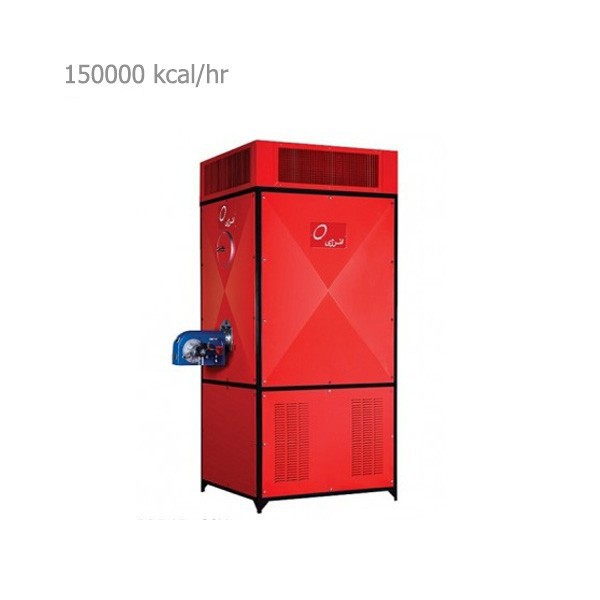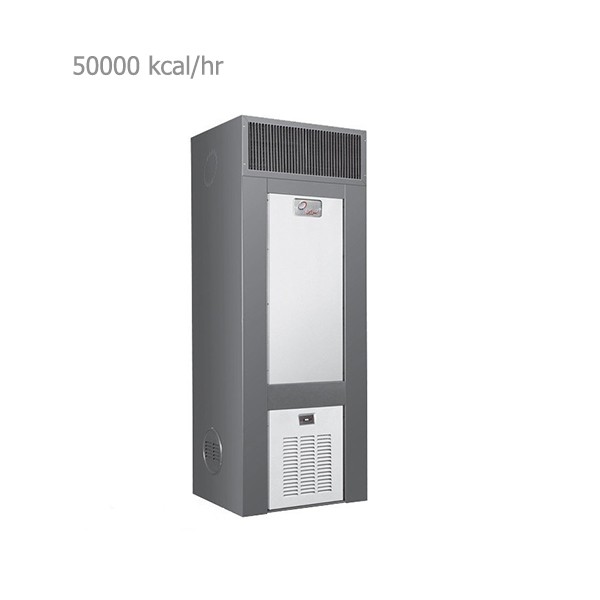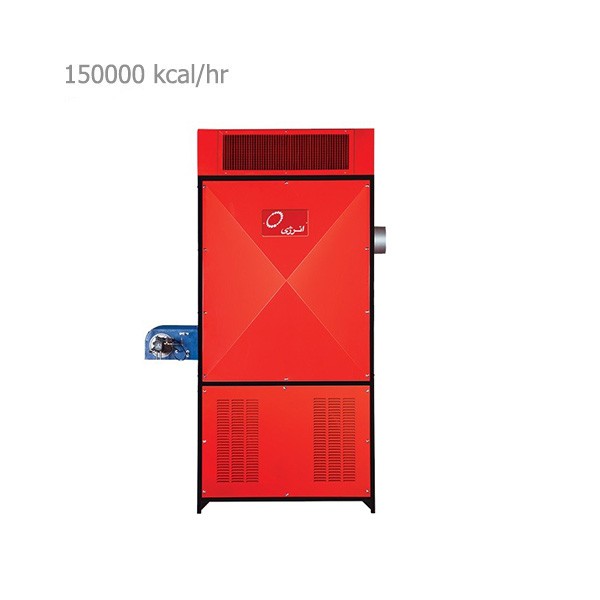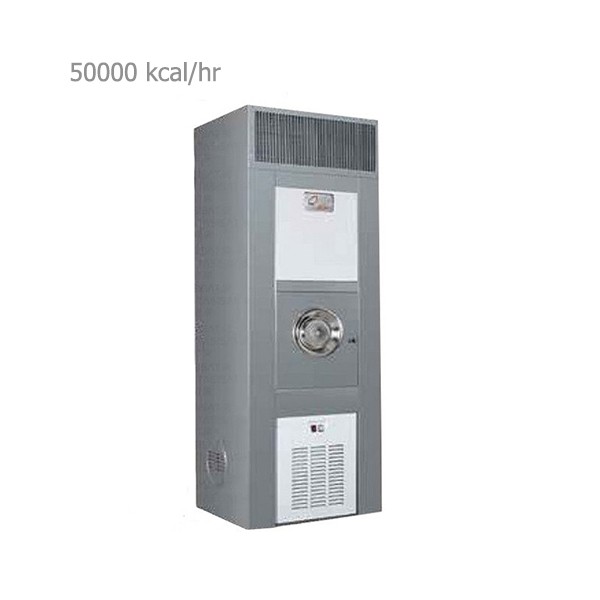Furnace
A furnace is a type of HVAC heat chamber used in large areas, such as industrial halls and public places, due to its high heating capacity and the possibility of proper and quick heat distribution.
If you need a furnace but do not know exactly which furnace with what heating power is best for you, stay with us in the rest of this article to learn more about the technical specifications, capacity, purchase price, and types of available models.
Furnace Expert Buying Guide and Price List
In the absence of an engine room or a weak performance of the central heating system, the hot air or the forced-air furnaces can be used as heat supply equipment in places such as large halls, poultry farms, greenhouses, factories, workshops, exhibitions, banks, department stores, mosques, etc.
Furnace Heating Capacity Estimation
Determining the capacity of the furnace for a project in the cold season is somewhat different based on the climate condition.
About 40 kcal/h of heating capacity per cubic meter is considered for warm climates such as:
- Saudi Arabia: Yanbu, Jeddah, Mecca, Al Wajh, Al Hufuf, Unayzah, Buraydah
- Lebanon: Baslouqit, Bdebba, Baddouaa, Abu Saad, Aassoun, Deir Janine, Halba, Hakour, Haizouq
- Yemen: Ayn Milh, Tarim, Ard al Huwayl, Ard as Suqayr, Bayt al Mudir, Al Ma'shur
- Iraq: Amarah, Nasiriya, Kut, Kerbela, Semawa, Badrah, Rafaei
- United Arab Emirates - UAE: Dubai, Difan, Bida, Ghayl, Uwaynat, Ar Rafa'ah, Lazimah, Adh Dhayd, Layyah
- Qatar: Duha, Al Rayyan, Al Daayen, Al Wakrah
- Kuwait: Jahra, Sulaibiya, Al Wafra, Abdaly, Sabriyah
- Syria: Deir ez-Zor, Al Raqqah, Al Hasakah, Hama, Daraa, Aleppo, Homs, Idlib
- Turkey: Cizre, Urfa, Batman, Siirt, Izmir, Adana, Amasya, Istanbul
- Azerbaijan: Saatly, Sabirabad, Zerdab, Imishli, Beilagan
- Armenia: Armavil, Aragatsotn, Yerevan, Syunik, Tavush, Ararat, Kotayk, Lori
About 50 kcal/h of heating capacity per cubic meter is considered for cold climates such as:
- Saudi Arabia: Turaif, Sakaka, Abha, Rafha, Riyadh, Arar
- Lebanon: Baalbek-Hermel, Beqaa, Nabatieh, Akkar, Ain Dara, Beirut
- Yemen: Sa'dah, Dhamar, San'a, Al Mahwit, Al Jawf, Ma'rib, Shabwah
- Iraq: Sulaymaniyah, Dokuk, Nineveh, Kirkul, Saladin, Anbar, Muthanna, Babil,
- United Arab Emirates - UAE: Al Quwain, Al Khaimah, Fujairah, Ajman, Sharjah
- Qatar: Umm Salal, Al Shamal
- Kuwait: Farwaniya, Al Asimah, Hawalli, Ahmadi, Mubarak Al-Kabeer
- Syria: Damascus, As-Suwayda, Quneitra
- Turkey: Erzurum, Ardahan, Erzincan, Agri, Bayburt, Kars, Karabut, Kastamonu, Bingol, Hakkari, Van, Samsun, Bursa
- Azerbaijan: Kelbajar, Balaken, Gabala, Zagatala, Gahk, Shamkir, Sheki, Oghuz
- Armenia: Vayots Dzor, Shirak, Gegharkunik
Furnace Heating Capacity Calculation Formula
QT = [(U1 x A1 + U2 x A2 + U3 x A3 + …) x ΔT + (V x 0.0749 x 0.24 x ΔT)] x 4
Here:
- QT heating load of each unit in kilocalories per hour.
- U1 to Un heat transfer coefficient of each surface between the inside and outside of the building in terms of BTU/ft2.hr. oF, which should be determined based on the material of each wall, using engineering reference tables.
- A is the area of each of the peripheral surfaces of the corresponding unit that transfers heat to the outside of the building. This area (in square feet) includes walls, windows, doors, and ceilings.
- ΔT is the temperature difference between the inside and outside of each unit under normal conditions, which is in °F.
- V Total amount of air infiltrating through door or window seams (CFH) in ft3/hr
- Constant factor 0.0749 is air density in conventional conditions in the English unit system.
- Constant coefficient of 0.24 specific heat capacity of ambient air in conventional conditions in English units.
In the above formula, by calculating the values of all the parameters, you can get accurate results to determine the required heating capacity of the furnaces.
Note: The exact values of U and area A for each of the surrounding surfaces must be considered based on specific details in each building and heat transfer coefficient engineering tables.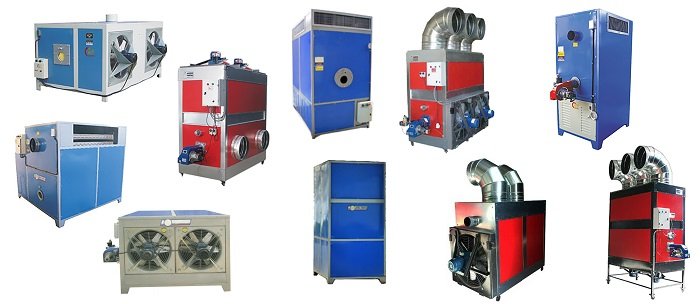
Types of Furnaces
Furnaces are divided into several types in terms of fan location, fuel type, and capacity:
Fan Location
Furnaces are divided into two types, suction and blowing, based on the location of the fan:
Suction furnace: If the fan is placed in such a way that it sucks air from the surface of the heat exchanger, it is called a suction furnace.
Blowing furnace: If the fan is placed in such a way that it drives the air toward the surfaces of the heat exchanger, it is called blowing or drifting.
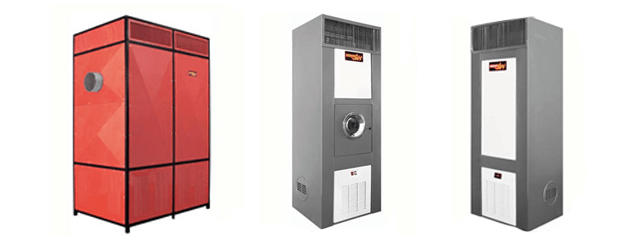
Capacity and Fuel Type
There are three main types of furnaces:
- Gas-burning furnace
- Gasoline or diesel-burning furnace
- Dual fuel furnace
Standing Furnace Features
The following are some of the advantages of standing hot-air furnaces:
- The ability to install an ambient thermostat to accurately control the temperature.
- Ability to blow the air from the bottom of the device (reverse air blowing).
- Direct ventilation, with a damper and the possibility of channeling hot air distribution (in high capacities).
- Creating pleasant heat and uniform distribution.
- They have an electrical panel equipped with control equipment.
- They are highly energy efficient.
Furnace Main Components
Furnaces consist of three main parts which are:
The Heat Exchanger
The heat exchanger of the furnace is in contact with the flame from the inside and with the ambient air from the outside.
These heat exchangers are usually made of cast iron or steel, and the side exposed to the air usually has a finned surface that heats up better when the air passes over it (due to the increase in heat transfer levels).
The Blower Fan
The fan used in the furnace sucks the air from the place to the outer wall of the furnace, and after passing through the air-to-air heat exchanger, which results in a temperature increase (by 25°C to 40°C), it redirects to the environment.
Furnaces are divided into two types based on the location of the fan, suction and blowing if the fan is placed in such a way that it sucks air from the surface of the heat exchanger, it is called a suction furnace, and if the fan is placed in such a way that it drives the air towards the surfaces of the heat exchanger, it is called blowing or drifting.
The Burner
The heat produced by the burner in the combustion chamber transfers to the air that surrounds the combustion chamber from the outside after passing through its walls and brings it to a temperature of about 60°C.
Gas burners are divided into two types, blower or atmospheric, based on the type, design, and heating capacity of the furnace.
Notes:
- In the case of using a gas-burning furnace, a gas filter must be installed in the gas path to the electric valve. The fuel gas used in furnaces is usually municipal gas with a pressure of ¼ pound (PSI).
- In case of using a diesel-burning furnace, it is necessary to install a diesel filter in the way of fuel entering the furnace to prevent diesel impurities from entering the fuel nozzle.
- The type and angle of the fuel injector from the diesel nozzle are very important matters and should be done only after consulting with the technical experts of the manufacturing company.
Advantages of the Furnace
Here are some of the most important advantages of a hot-air furnace:
- The hot air furnace is equipped with an ambient thermostat and automatically keeps the room temperature at the desired temperature.
- The ventilation is formed directly, and the heat is distributed uniformly in the environment.
- The hot-air furnace heats the desired environment in a very quick and short time.
- They have a special fan for exhausting gas from combustion based on the function of the control limit fan on the combustion chamber.
- The hot air furnace does not emit carbon monoxide in the indoor environment due to the complete combustion of gas and having a chimney for the exit of gases from the combustion chamber.
- The heat exchanger of the hot air furnace performs maximum heat transfer from the combustion chamber to the circulating air of the environment without smoke and combustion gases entering the place.
Furnace Installation Tips
5 things you should keep in mind when installing a hot air furnace:
- According to the national building regulations, the return air should not be provided from the kitchen space, restrooms, parking lot, and other closed or polluted spaces such as hospital environments.
- The distance between the heater and the nearest wall should be at least 15 cm (6 inches), and the minimum distance between the heater and any flammable materials should be at least 30 cm (12 inches).
- It is not allowed to install the chimney at a distance of less than 5 cm or 2 inches from flammable ceilings or walls.
- The access space in front of the device and where the burner is installed is also defined as at least 45 cm (18 inches).
- The distance between the heater and the ceiling should not be less than 45 cm.
Buying Furnace
Most heating systems take several hours to heat the environment, but hot air furnaces can heat the ambient air very quickly, and the ventilation is done directly without any harmful gases, and the air remains clean, which makes the hot air quickly spread evenly in the desired space.
To choose and buy the right hot air furnace, you must first determine the required heating capacity and the type of fuel used.
On the website of DamaTajhiz HVAC, technical specs of dozens of hot air furnaces from reputed brands, along with their main guarantee, have been provided so you can experience optimal and smart shopping.
Review, Selection, and Pricing of HVAC Equipment

Furnace Price
The prices of hot air furnaces are variable based on type, capacity, quality, and after-sales service of the manufacturer of that device.
It should be noted that the prices of all furnaces provided on the specialized website of DamaTajhiz HVAC are up-to-date, with an elite discount already included. Therefore, the best price for all types of hot air furnaces is guaranteed.
Dear user:
While thanking you for the trust you have in the technical opinions of DamaTajhiz sales experts, it should be noted that the determination and selection of the desired product brand based on history, brand strength, service, and product price is ultimately determined by the buyer.
But in hot air furnaces, most users and buyers choose and buy best-selling brands such as Energy and Garmasan according to their quality, price, and after-sales service.
If, after reading the above material, you have more questions about deciding to buy different types of pool pumps, diatomaceous, and pool pumps, you can contact the pool equipment sales experts at extension numbers 107– 108- 121- 122. Get hot air furnace advice and ask your questions.
Because the specialized group of DamaTajhiz HVAC Group provides all kinds of hot air furnaces in the Middle East region, if you need a pool pump for any of the countries in the region, you can place your purchase order with confidence, product guarantee, and reasonable price. Please leave it to our sales experts.

"Knowledge Fuels Better Choices"
Registered Trademark and Stewardship Business Licenses Issued by the Union of Virtual Business Association and the HVAC Equipment Industry.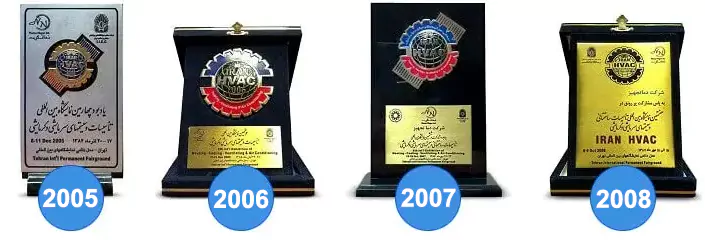
DamaTajhiz HVAC Participation at International HVAC and Construction Facilities Exhibitions Demonstrates its Global Reach and Commitment to the Industry.
We Look Forward to Your Call and the Opportunity to Meet With You
SHARE THIS CONTENT TO SPREAD THE KNOWLEDGE
| |
Head Office: No. 463,Talebian Alley,Taleghani St.Tehran,Iran


DamaTajhiz has provided the opportunity to sell and ship specialized HVAC equipment for applicants in the following countries as the first and the most popular online store for selling HVAC equipment (Heating , Ventilation , Cooling , Air conditioning) in the Middle East : Afghanistan – Tajikistan - Uzbekistan – Turkmenistan – Azerbaijan – Armenia – Georgia – Turkey – Iraq – Syria – Jordan – Kuwait – Emirates – Qatar – Oman.

